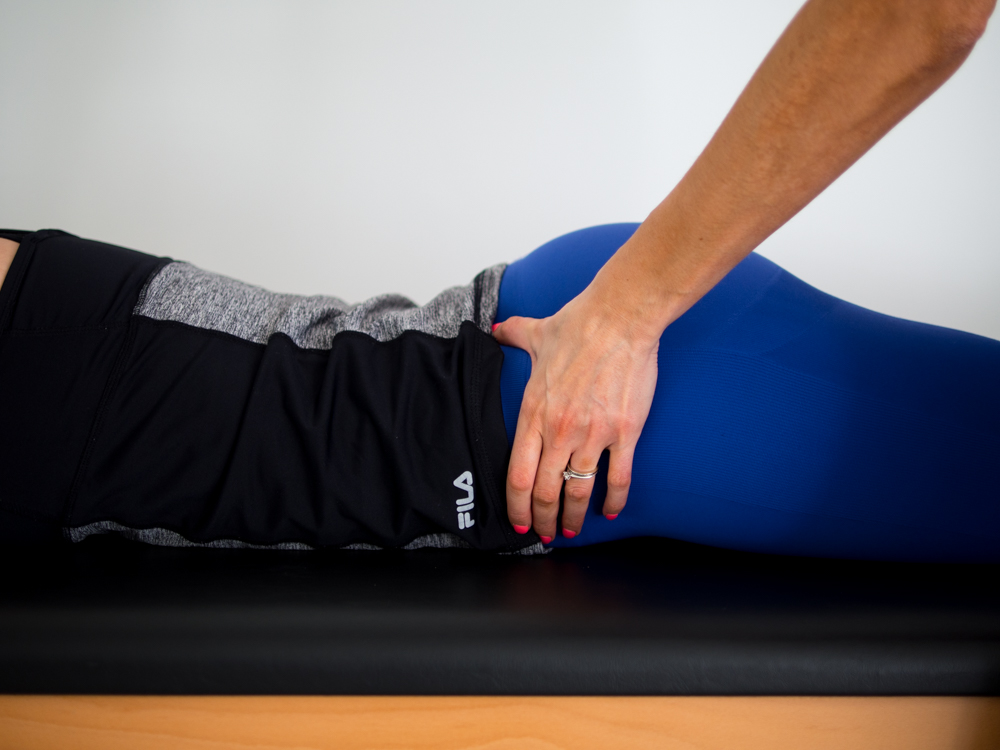The Gluteus medius (gMed) story... a pain in the butt...
The Gluteus medius (gMed) story... a pain in the butt...
By Lauren Turner (M.Sc.(Rehab Sci.), B.Sc.(Sport Sci. Hons), APAM)
I have a love-hate relationship with GMed. It is the muscle that “pushes” the “snooze” button during my active and busy day and the one I have to work on most diligently to “get out of bed”. Therefore it may come as no surprise that as a Musculoskeletal Physiotherapist, I enjoy the challenges of injuries related to weak and misfiring GMed, which are plenty. All too often, the “go to” exercise to retrain GMed is the well-known clam, but from my experience and that of many patients, that it is not always the best exercise to begin with and will vary with individuals.
I am an advocate of the side lying leg raise. This exercise helps GMed perform its primary hip abduction role (Standring et al, 2005), with its main function in standing to stabilise the pelvis in unilateral stance against the effects of gravity (Brukner et al, 2012). A study by Distefano et al, 2009 demonstrated that side lying abduction produced the most muscle activation with EMG (electromyography). Single leg squats produced the second most EMG activity and lateral band walks the third. Therefore, the side lying leg raise exercise is a really good starting point and can increase activation of GMed and help develop and rebuild the muscle-brain pathway.
The exercise is performed with the affected GMed upper-most. Two pillows are placed between the legs to achieve neutral or slight abduction as needed. The patient is instructed to rotate slightly forward, to reduce facilitation of tensor fascia lata (TFL), when the exercise is performed. GMed and piriformis (if appropriate), should be palpated during activation, to monitor effectiveness of GMed contraction. The leg is raised enough only to take a dent out of the pillow, an almost isometric contraction, essentially. This exercise has consistently been shown to be highly effective in recruiting GMed with approximately 60% maximum voluntary isometric contraction (MVIC) on EMG testing, once the exercise is progressed to a higher leg raise (Reiman et al, 2012).
The motivation comes in performing the exercise periodically during the day, enough to keep GMed “awake”. The objective is to progress to other more functional GMed exercises depending on goals of rehabilitation and should include some closed-chain standing exercises. Therefore as progression from the side lying leg raise exercise, you may want to consider standing exercises like shallow squats with theraband or lateral band walks. As a progression, increase the range to a deeper squat and furthermore add one leg exercises like single leg squats, physio lunges and multi-directional lunges. Pelvic drops also rank highly amongst exercises for running rehabilitation (Distefano et al, 2009). High-level progression for athletes may include the use of the BOSU balance ball to improve strength, flexibility, proprioception, co-ordination in conjunction with increasing challenge to the core.
Keep in mind the action of GMed; to abduct and both externally and internally rotate the hip. When considering rehabilitation options, don’t give only sagittal plane exercises as this powerful muscle works hardest in the frontal and transverse planes. Also, choose exercises that challenge the GMed enough, without aggravating the patient’s pain or symptoms.
In conclusion, a successful GMed strengthening and/or re-activation regime should be progressive, functional, specific and pain-free. With this in mind, there is no specific or ideal exercise for each patient. As Physiotherapists, let’s get inventive and manage our patient’s mindfully, no butts about it!
Physiotherapy Blog References
Brukner, P, Bahr, R, Blair, S, Cook, J, Crossley, K, McConnell, J, McCrory, P, Noakes, T, Khan, K. Clinical Sports Medicine, 2012, 28: 510-511
Distefano, L.J, Blackburn, J.T, Padua, D.A, Marshal, S.W. Gluteal muscle activation during common therapeutic exercises. Journal of Orthopaedic and Sports Physical Therapy, 2009, 39: 532-40.
Reiman, M.P, Bolgla, L.A and Janice K.L. Physiotherapy theory and practice, 28(4), 257-268.
Standring, S, Ellis, H, Healy, J, Johnson, D, Williams, A. Grays Anatomy: the anatomical basis of clinical practice. 39th ed. Edinburgh: Elsevier Churchill Livingstone, 2005.
